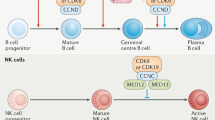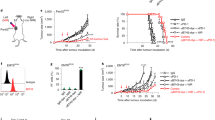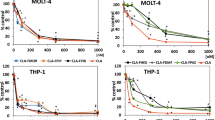Abstract
DURING the past 3 years we have been investigating the biological properties of a series of thiophens of tho following general formula (I):  in which R is an alkyl or alkoxy group and the substituent X is an electron-withdrawing group such as halogen or nitro. These investigations resulted from the observation that the compound I.C.I. 45,514 (I, R = ethoxy, X = H) prevented the development of secondary inflamed lesions in rats injected into the foot-pad with a fine suspension of dead tubercle bacilli in liquid paraffin. The use of this syndrome for evaluating chemotherapeutic agents has already been described1,2.
in which R is an alkyl or alkoxy group and the substituent X is an electron-withdrawing group such as halogen or nitro. These investigations resulted from the observation that the compound I.C.I. 45,514 (I, R = ethoxy, X = H) prevented the development of secondary inflamed lesions in rats injected into the foot-pad with a fine suspension of dead tubercle bacilli in liquid paraffin. The use of this syndrome for evaluating chemotherapeutic agents has already been described1,2.
This is a preview of subscription content, access via your institution
Access options
Subscribe to this journal
Receive 51 print issues and online access
$199.00 per year
only $3.90 per issue
Buy this article
- Purchase on Springer Link
- Instant access to full article PDF
Prices may be subject to local taxes which are calculated during checkout
Similar content being viewed by others
References
Newbould, B. B., Brit. J. Pharmacol., 21, 127 (1963).
Newbould, B. B., Brit. J. Pharmacol., 24, 632 (1965).
O'Mant, D. M., and Stacey, G. J., U.K. patent application Nos. 8965/63 and 27696/63 (Belg. Pat. No. 661, 255).
Author information
Authors and Affiliations
Rights and permissions
About this article
Cite this article
FRANKLIN, T., NEWBOULD, B., O'MANT, D. et al. A New Type of Cytotoxic Immunosuppressive Agent: 3-Acetyl-5-(4-fluorobenzylidene)4-hydroxy-2-oxo-2:5-dihydrothiophen. Nature 210, 638–639 (1966). https://doi.org/10.1038/210638a0
Issue Date:
DOI: https://doi.org/10.1038/210638a0
This article is cited by
-
Passive transfer of allergic encephalomyelitis in rats: a tool for drug mechanism studies and detecting late-acting immunosuppressants
Inflammopharmacology (2021)
-
The life and works of Dr Brian Bernard Newbould (28nd Jan 1934-25th Nov, 2016) B. Pharm, FR PharmS, PhD
Inflammopharmacology (2021)
-
2-(4-chlorophenyl)thiazol-4-ylacetic Acid (‘Myalex’): a New Compound with Anti-inflammatory, Analgesic and Antipyretic Activity
Nature (1969)
Comments
By submitting a comment you agree to abide by our Terms and Community Guidelines. If you find something abusive or that does not comply with our terms or guidelines please flag it as inappropriate.



